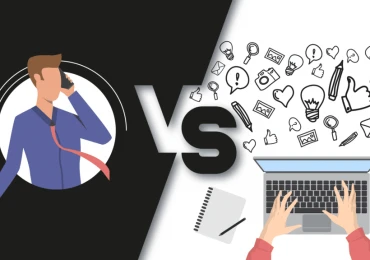
It is a marketing strategy that relies on creating interactive experiences similar to virtual mazes, where customers are guided through complex digital paths that encourage them to explore products or services. The goal of these mazes is to attract customers' attention and motivate them to interact with the brand in unconventional ways through challenges, questions, and multiple options.
Characteristics and characteristics:
1. Interactivity: It relies on engaging the customer in an interactive exploratory journey full of options and challenges.
2. Creativity: Designing mazes requires creative thinking to create exciting and unexpected experiences.
3. Analysis and tracking: User behavior can be tracked within the digital maze to analyze their preferences and understand their interaction with the brand.
4. Motivation: It motivates customers to continue exploring by offering rewards or personalized guidance based on their choices.
Benefits:
1. Attracting attention: Digital mazes provide a unique experience that attracts customers' attention and motivates them to continue.
2. Enhancing engagement: It encourages deeper engagement with the brand through active participation.
3. Data collection: Helps collect accurate data about customer behavior and interests.
4. Boost loyalty: Unique experiences can increase customer loyalty and encourage them to come back for more.
Disadvantages:
1. Complexity: Some customers may find it difficult to navigate the mazes, which may discourage them from continuing.
2. Development cost: Designing and creating interactive digital mazes requires significant investments in programming and design.
3. Need for technology: The experience may be limited for customers who do not have good access to the internet or modern technologies.
4. Not suitable for all groups: Some audiences may not engage with this type of marketing, which reduces its effectiveness.
Types:
1. Virtual mazes: Fully digital mazes that use virtual reality technologies to provide an immersive experience.
2. Interactive web mazes: Require users to navigate between different web pages to solve puzzles or find rewards.
3. Game mazes: Used in digital games to motivate users to complete tasks to access exclusive rewards or content.
4. Social media campaigns: Simple mazes are used within interactive posts on platforms such as Instagram and Facebook.
Arabic examples:
1. Retail companies: such as using virtual mazes to promote products via websites or mobile applications.
2. Clothing brands: which provide interactive mazes in online stores to discover new clothing collections.
3. Banks: using educational mazes to guide new customers on how to use electronic banking services.
Foreign examples:
1. IKEA: launched an interactive online campaign based on a digital maze, where users had to navigate virtual rooms filled with furniture to reach specific products and win prizes.
2. NIKE: used augmented reality mazes to promote new shoes, where customers pass through a digital maze within the application to reach special and exclusive models.
3. COCA-COLA: created an interactive virtual maze on social media as part of its summer campaign, allowing customers to interact with its products in fun and unconventional ways.
4. LEGO: Provides online digital mazes and interactive games that allow children to explore and build new characters and products in an interactive and engaging way.
Digital maze marketing is a creative way to engage with customers and provide a fun and unique experience. This type of marketing relies on creativity and technology to encourage customers to explore the brand in new and exciting ways. While there are some challenges related to costs and complexity, the effectiveness of this strategy lies in its ability to provide an enjoyable experience that encourages interaction and increases customer loyalty.

26/08/2024

26/08/2024

17/08/2024

14/08/2024

20/08/2024

22/08/2024

16/08/2024

26/08/2024

16/08/2024

26/08/2024

20/08/2024

01/09/2024

22/08/2024

30/08/2024

26/08/2024

30/08/2024

14/08/2024

25/08/2024

20/08/2024

18/08/2024